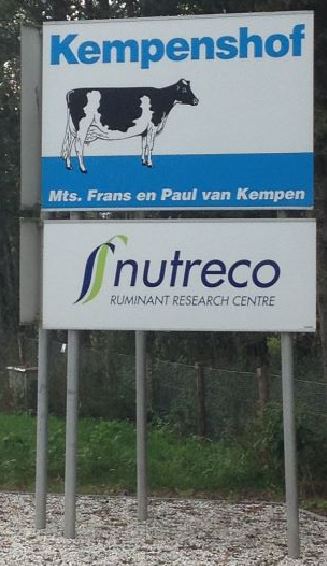



Is DNA Destiny? Early Life Sets Lifetime Heifer Performance
ANALYSIS - Theories at the forefront of dairy calf nutrition have their roots in Dutch Second World War history and human prenatal development, the Global Dairy Calf Symposium heard last week.Current discussions on epigenetics and metabolic programming have spawned from a chain of academic inquiry sparked by a generation of Dutch people born and raised around time of the Dutch famine.
An extreme food shortage hit the region from November 1944 to April 1945, with long term effects for gestating babies at the time, explained Professor Martin Kaske, Swiss cattle health consultant and lecturer at the Vetsuisse Faculty in Zurich.
He told the conference that the phenomenon in question relates to the early stages of pre and post natal development.
After the Dutch Famine
Physicians noted increased risk of poor health and coronary heart disease in adults from children exposed to inadequate nutrition in early gestation.

Those hit by famine in mid to late gestation had a higher chance of glucose intolerance.
What followed was extensive research into the effect of intrauterine growth restriction in mammals in the late twentieth century.
Studies on rats, pigs, humans, beef cattle and sheep, as well as dairy youngstock have shown that early life nutrition and management can pre-programme individuals for life time performance.
Dubbed many things, programming the metabolism of mammals is also known as; foetal programming, metabolic imprinting, fuel mediated teratogenesis and perinatal programming.
Many questions remain unanswered in epigenetics but it is thought to be an evolutionary mechanism.
How Does Metabolic Programming Work?
One explanation is that in times of plentiful food supply an animal needs to outcompete competitors to pass on its genes.
During restricted food supply survival is key and being able to breed and function on a lower nutritional plane is more important.
What has been seen in human health is that after a lower nutritional plane in early life and a higher standard of living there can be a rise in obesity.
The biological mechanisms at work are thought to be cellular material outside the genome and other influences.
“Life events do not affect nucleotides of the DNA, yet they do affect the proteins around the DNA – determining whether genes are activated or not,” said Professor Kaske.
He told the conference that calves fed at high intensities in early life
• Had higher lifetime yield
• Produced more in the first lactation
• Had higher weight gain to first lactation
Genetics can be turned down and up, effectively meaning that how a farmer feeds a young calf affects gene expression, not the actual DNA itself.

These principles form the core of calf rearing methodologies, with producers being advised that how a calf is fed will effect milk production as an adult.
An example of this is Nutreco’s Lifestart programme, a methodology for calf rearing placing importance on Epigenetics.
Nutreco states: “Growth in animals is understood to be dependent on four key factors: nutrition, endocrine function, management and genetics.
“Genetics has long been thought to be the most powerful of these in determining maximum growth potential.”
However, Nutreco sees Epigenetics as a field which will ‘dominate’ biological study in the years to come.
Effect on Adult Cow
In order to assess the impact of different nutrition through young heifer development, Nutreco researchers are running trials measuring the productive life of a sample of 70 Holstein-Friesian calves.
First and second lactations will be measured after 35 calves have been given a high and low plane of nutrition in the first eight weeks of life.
• Low Plane of Nutrition
Total of 30 kilo of calf milk replacer (CMR) in an 8 week feeding scheme
• High Plane
Total of 60 kilos of CMR in an 8 week feeding scheme.
Study Objectives
The study, led by Nutreco’s Dr Harma Berends, sets out to determine the long-term metabolic changes programmed during the pre-weaning phase.
This includes a definition of the impact of different nutrition on milk production over the first and second lactation.
The long term study will end when second lactation finishes in August 2017.
Michael Priestley
News Team - Editor
Mainly production and market stories on ruminants sector. Works closely with sustainability consultants at FAI Farms



